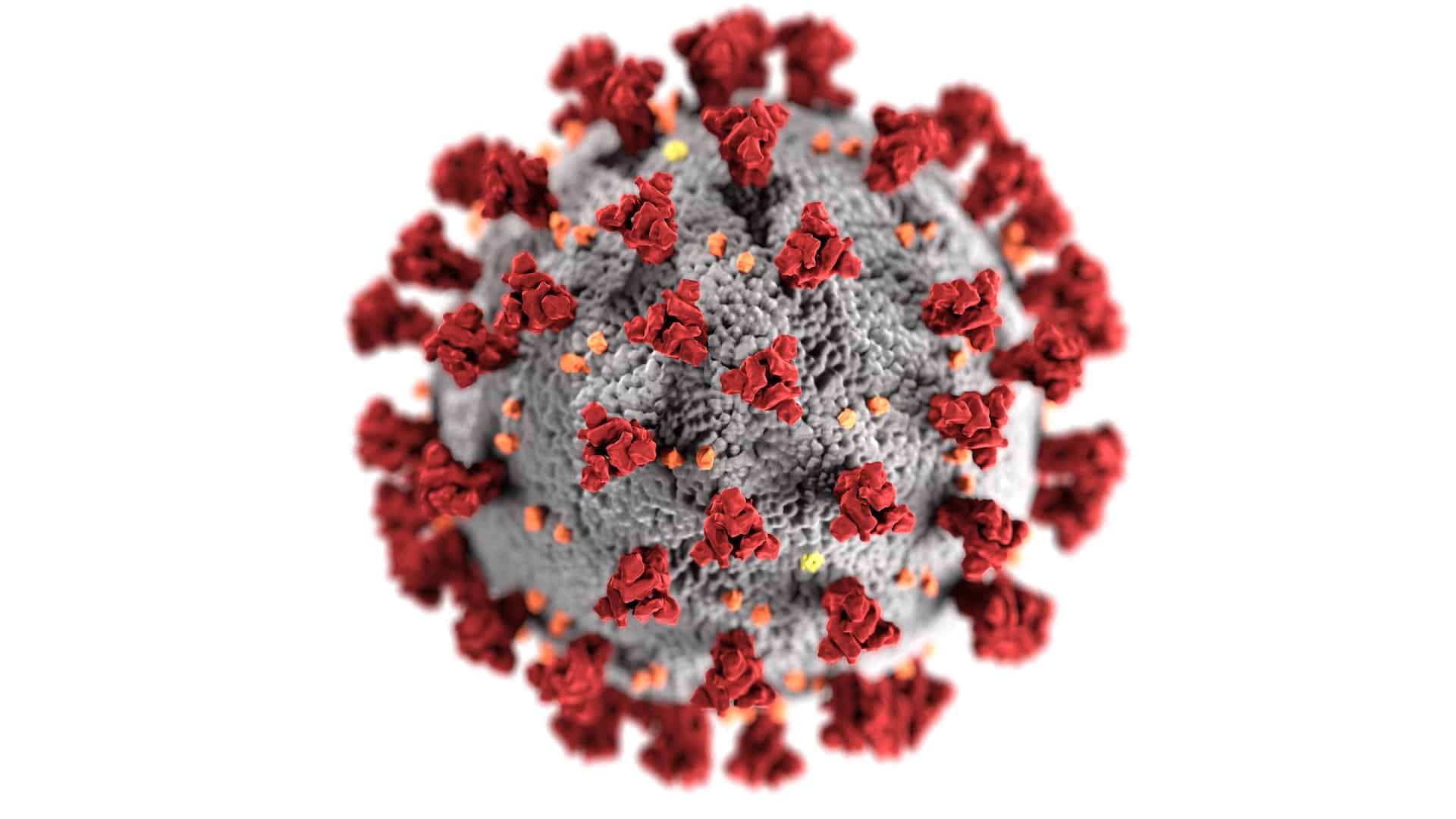Over the past four weeks, 50% of Americans report canceling or rescheduling in-person medical appointments.
Medical providers are attempting to quickly expand telehealth options to prevent the spread of COVID-19, but these services require reliable broadband connections, something that an estimated 42 million Americans may currently lack.
The coronavirus pandemic is beginning to strain healthcare systems in the U.S. We asked Americans about their access to medical professionals, as well as their ability to access (and receptivity to) telehealth services.
Key Findings
- Telehealth services could ease the unprecedented burden being placed on the U.S. healthcare system. However, as many as 42 million Americans may lack the connection required to take advantage of telehealth services.
- Over half of Americans (53%) we surveyed indicated that they or their medical provider had cancelled or rescheduled a medical appointment due to the ongoing coronavirus pandemic.
- 54% of respondents said that their primary care provider currently offers some sort of telehealth service (online appointments, prescriptions, consultations, etc).
- Telehealth services have been shown to reduce healthcare costs and improve health outcomes for many Americans.
- Most Americans (75%) indicated that they were receptive to using telehealth services in place of in-person medical appointments, if it was available.
Telehealth and telemedicine services, sometimes also referred to as mobile healthcare, relate to a range of services that can be offered to patients over the internet. Telehealth services range from video consultations and check-ups to remote monitoring of patients and even digital CT scans.
Physicians can perform follow-up discussions or go over lab work results online with patients via video feed, for example; or monitor a patient’s condition using devices that collect data and transmit it to a doctor’s office over the Internet. Remote monitoring can also complement in-home visits for elderly or immobile patients.
During his March 5th address, President Trump pointed to telehealth as an opportunity to slow the spread of COVID-19 and help reduce the strain on hospitals across the country. Outbreaks of the novel coronavirus in countries like China, Spain, and Italy demonstrate how hospital facilities, which typically operate near capacity under normal conditions, can be quickly overwhelmed by the demands of COVID-19 patients suffering severe complications who need ICU beds, ventilators and other medical equipment.
Telehealth services offer key advantages that can be leveraged to help respond to the national crisis caused by the pandemic. By offering many services online that would normally require a patient to travel to a doctor or specialist in an office or hospital setting, telehealth can reduce the amount of traffic coming in and out of medical facilities, thereby reducing the possibility of the coronavirus covertly hitching a ride into a facility or leaving a facility on a non-COVID-19 patient.
Limiting exposure risk has become a foundational strategy of the U.S. government’s response to the pandemic. Several state governments are also working to limit exposure risk in their states by implementing social distancing and shelter-in-place orders, especially in major metro areas such as Dallas, Los Angeles, Houston, New York City, and Seattle. Such approaches are extremely important at a time when medical facilities all across the country are facing shortages in personal protective gear.
Offering remote appointments can also prove crucial for those considered most at-risk to suffer severe complications from COVID-19 — including the elderly, those who are immunocompromised or those who have chronic disease. Telehealth services can give these individuals the opportunity to make their regular appointments while staying safely at home.

Broadband requirements for telehealth
Telehealth services have a litany of technical requirements, including proprietary software, high definition video, and HIPAA-compliant encryption. But having a reliable and fast internet connection is central to any telehealth service. Telehealth services typically require patients to download and log-on to secure software applications that can support things like video streaming and large file transmission between patients and doctors. Both the medical facility where the doctor is located, and the location where the patient is located, need to have adequate broadband connections to support telehealth.
There are currently no industry standards for internet speeds or capacity needed to support telehealth, and speed requirements can vary depending on the type of healthcare service being administered online. A patient who wants a doctor to look at a physical abrasion, for example, will need an internet connection that can support streaming high definition video without any glitches or buffering; while a patient whose vitals are being monitored remotely by a doctor needs to have a connection that offers low latency so that the data can be transmitted to the doctor’s office in near real-time.
Telehealth provider AmWell’s platform will operate with a low-speed internet connection, in the range of 2-3 Mbps, but video quality will likely suffer at that speed. And connection quality, such as low packet loss and low latency, is just as important as bandwidth.
Telehealth firm eVisit advises patients need at least 1.5 Mbps down and up to access services. eVisit’s platform can operate on LTE, and even 3G in extreme circumstances, because its platform can move between LTE video streaming and VoIP without interruption. But most telehealth providers agree the lack of video quality can be detrimental to remote doctor’s visits.
Another significant challenge is getting rural healthcare facilities wired with enough high-speed internet and capacity to support conducting multiple online visits simultaneously. The U.S. government’s health IT website suggests a 10 Mbps connection is suitable for smaller rural health clinics. Such speeds can support things like HD video consultations, remote monitoring and image and file downloads (though not in real-time). It suggests a 25 Mbps connection would be needed for real-time file download, and recommends a 100 Mbps connection for larger facilities like hospitals that need simultaneous HD video streaming, continuous remote monitoring, and quick file transfers.
But a 100 Mbps connection isn’t common in many rural regions of the country.
Broadband infrastructure in rural US
Rural communities in the U.S. have struggled for years with access to broadband network infrastructure and services. These areas tend to rely on older technologies such as DSL, satellite internet, or cellular-based fixed wireless access. These broadband technologies are useful for limited web-browsing, but typically are not reliable enough to support telehealth services.
According to data from the Federal Communications Commission, 12% of rural Americans lack access to 10 Mbps; 27% lack access to 25 Mbps, and 42% lack access to 100 Mbps. A separate 2019 report from the Annals of Internal Medicine, however, estimates 40% of individuals in the most rural areas of the country lack access to any broadband at all.
Broadband infrastructure remains such a challenge to telehealth services in rural regions that the American Medical Informatics Association (AMIA) wrote a letter in 2018 urging the FCC to designate broadband access as “a social determinant of health,” meaning lack of broadband access is a structural factor that impacts health outcomes. “Vulnerable groups face specific challenges related to inadequate access to affordable and consistent high-speed internet,” the letter reads. “These groups would benefit from an environment that would foster a low-cost broadband option with access that would be open and as ubiquitous as possible.

Rural communities and healthcare
Urban areas on the east and west coast have been hardest hit by COVID-19 in the U.S. Rural regions have the benefit of having less people per square mile than urban areas, but there are still factors that make rural residents more vulnerable to severe complications caused by the disease.
Rural areas have the lowest patient-to-primary care physician ratio in the United States. A 2009 study characterized 75% of rural counties as being “medically underserved.” It also found 166 rural counties, each comprised of 10,000 or more residents, had no primary care physician. Rural areas average less than 40 physicians for every 100,000 people, while urban areas average over 50 physicians for every 100,000 people, according to the U.S. Department of Health and Human Services.
Rural communities have faced a wave of hospital closures in the past decade. Since 2005, 166 rural hospitals have closed across the U.S., according to research from North Carolina’s Cecil G. Sheps Center for Health Services Research. Nineteen hospitals closed in 2019 alone, representing the most closures in any given year since 2005. A 2020 study from the Chartis Center for Rural Health found a further 450 of rural hospitals are “vulnerable to closures,” representing about 25% of current rural hospitals.
Existing healthcare facilities in rural America are now bracing for potential large spikes in patients needing ICU beds and ventilators. As many as 18 million people live in counties that have hospitals but no ICU, about a quarter of them 60 or older, the analysis shows. Nearly 11 million more Americans reside in counties with no hospital, some 2.7 million of them seniors. The Kaiser Health News estimates 18 million people currently live in counties that have hospitals but no ICU, about a quarter of them 60 or older. Nearly 11 million more Americans reside in counties with no hospital, some 2.7 million of them seniors.
That could spell disaster for residents if those communities see a spike in COVID-19 cases. While rural areas have generally not seen the level of spread that urban cities like Chicago, Phoenix and Austin across the country have, some rural communities have been hit hard. The Navajo Nation, for example, is grappling with a huge spike in COVID-19 cases in three Arizona counties, among a relatively small population, and stretched resources. The Utah Navajo Health System, supporting clinics on the Utah portion of the Navajo Nation, is now scrambling to set up Wi-Fi hotspots in clinic parking lots to enable patients to access care from their vehicles.
Compared to urban residents, rural residents also tend to have worse health outcomes. Rural communities are disproportionately affected by the five leading causes of death in the U.S., including heart disease, cancer, and chronic lower respiratory disease. Five of the ten most rural states in the U.S., for example, rank within the top ten in adult obesity and diagnosed diabetes, according to 2010 census data. And because rural residents tend to be older and sicker than urban residents, rural Americans are affected by chronic disease at higher rates than their urban counterparts. That makes rural communities especially vulnerable to the public health emergency.
Closing the digital divide is important
The coronavirus pandemic has highlighted again just how important closing the digital divide in the U.S. has become to rural communities. At a time like this, increasing broadband access to rural regions of the country should be considered a public health priority.
And rural communities will benefit in more ways than one. Studies have shown that broadband infrastructure can bring economic development to regions of the U.S. that are struggling to compete in the 21st Century. Reliable, high-speed internet can enable distance learning, opening up higher education opportunities to students living in rural areas; broadband access can also support rural entrepreneurs in establishing new services and creating new revenue streams; while remote working can expand earning potential for rural residents and spur new employment opportunities. Broadband can also help farmers take advantage of the latest technologies in crop management, increasing yields and reducing costs.
But the economic realities of building out broadband infrastructure in sparsely populated rural areas means closing the digital divide will require support at the local, state and federal level. And while there are a number of rural broadband funding programs at the federal level, it’s clear that more needs to be done to address this challenge head on.
About our data
This report uses datasets from our 2020 study looking into the amount of American’s currently living without access to a broadband connection, as defined by the FCC. It also relies on survey data we collected from more than 500 American adults in an effort to better understand how telehealth services could help ease the strain being placed on the U.S. healthcare system during this critical period.

